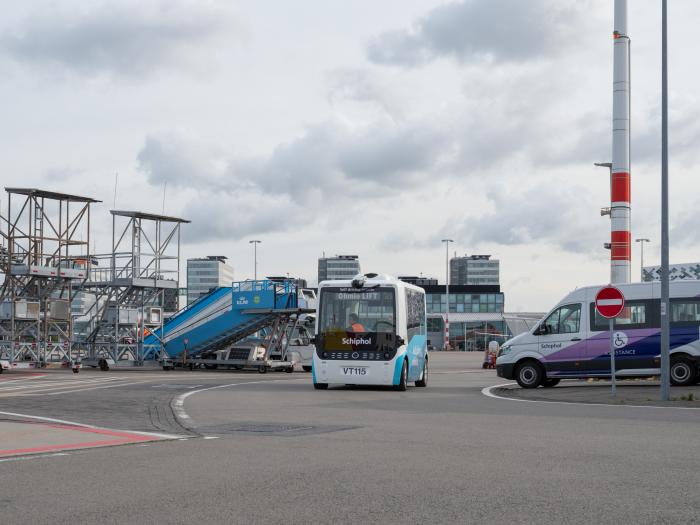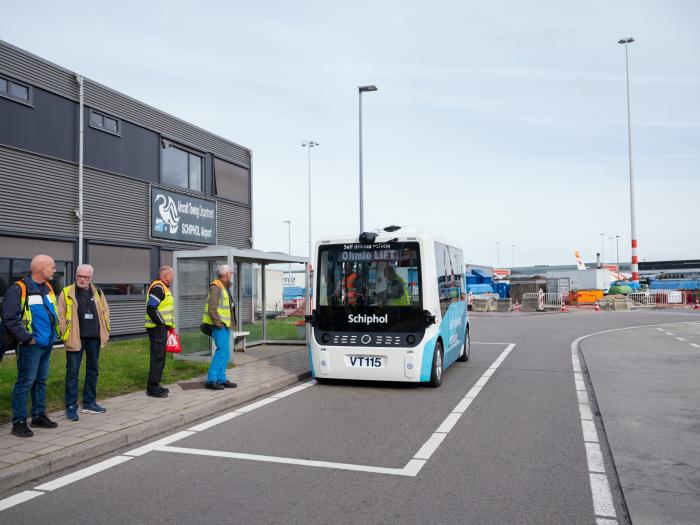These stops are close to the facilities of several cleaning and ground handling companies, making the shuttle service ideal for employees working at those locations.
In the first phase of the trial, the technology behind the buses is being thoroughly tested and adapted to the airport infrastructure. The shuttle service is currently being used by employees and their experiences with self-driving transport are being investigated.
Of the employees using the autonomous service, 89% have reported that they are willing to use it again. The initial findings show that the service is seen as safe and as a positive experience. The airport will continue testing the technology and assessing the possibility of expansion until the end of April.
“This trial represents another step towards our ambition of having an emission-free and autonomous ground operation by 2050. The knowledge and insights gained during this test period are of significant added value to future autonomous developments at Schiphol,” said Jan Zekveld, head of innovation at Royal Schiphol Group.

Pre-programmed buses
Schiphol is the first Dutch airport to use this technology from autonomous bus supplier Ohmio to transport people amid other airside traffic. These so-called Automated Guided Vehicles are programmed to drive fixed routes while considering other road users, their position on the road and when they should stop or give way to traffic.
The autonomous buses each have the capacity to transport eight people at a time. Employees can board from a staff passageway that provides access to airside, and board and alight at any location that is on the route. Each journey lasts around five minutes.
Ohmio develops autonomous vehicles connected to an intelligent transport system. The technology behind these self-driving vehicles was developed by HMI Technologies in Pakuranga, Auckland – a global tech company and innovator of intelligent transport systems, such as electronic traffic signs.

